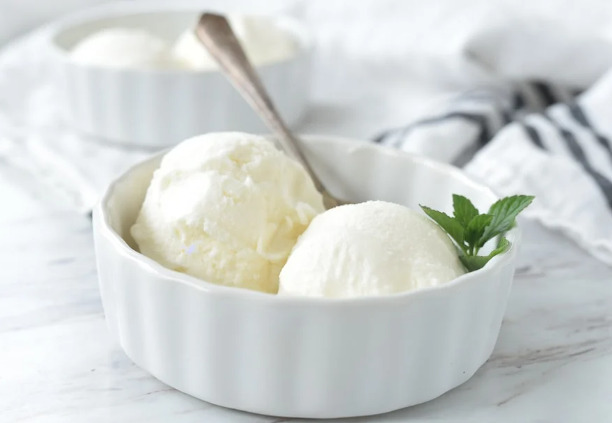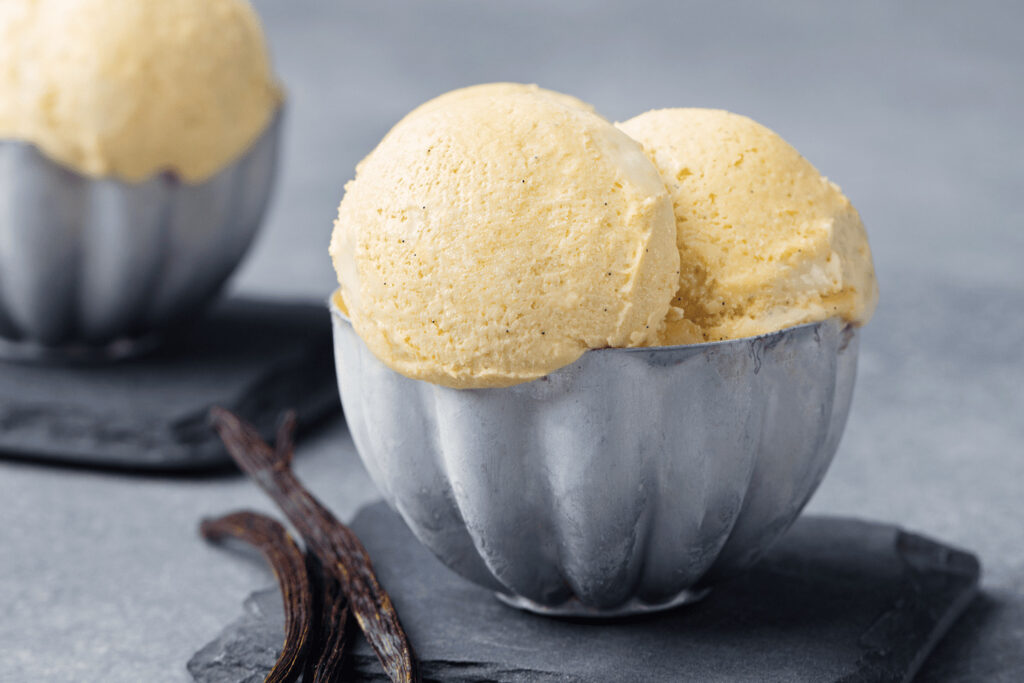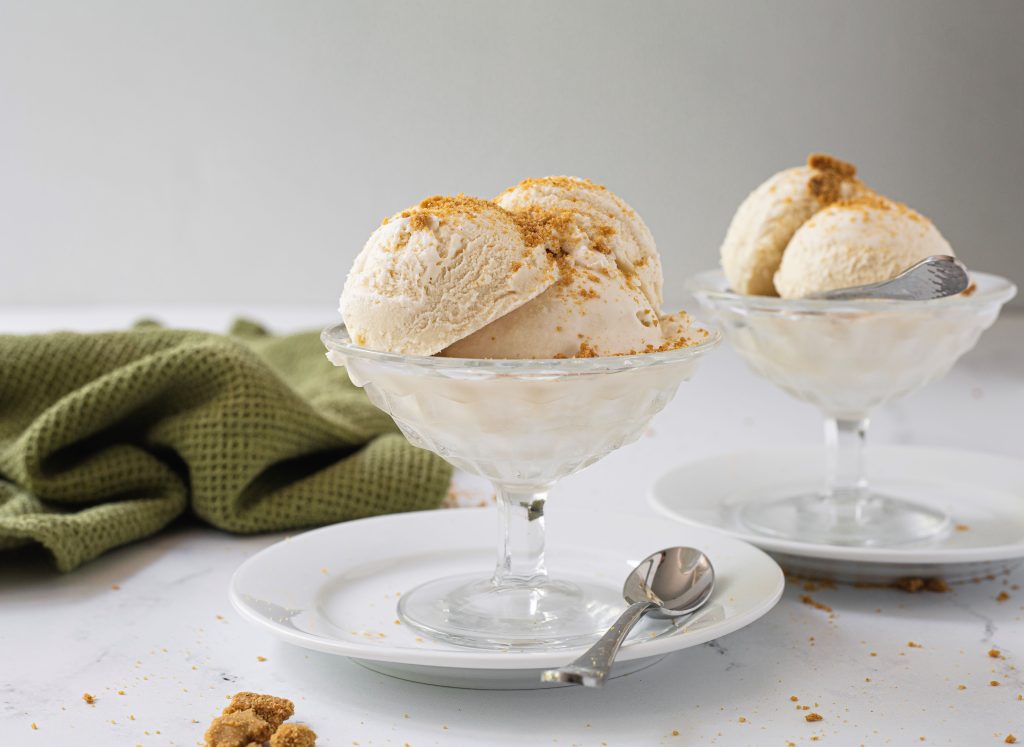|
Hey there, fellow culinary enthusiast! As you embark on this delectable journey through our articles, be prepared for a tantalizing adventure. Each click on our links could unveil delightful discoveries, possibly igniting your culinary creativity and, who knows, possibly adding a dash of sunshine to my day with a little commission from affiliate links. In other words, we sometimes earn a commission from partners listed. It's a win-win culinary rendezvous! |
When it comes to choosing flavors, vanilla is a classic favorite. Whether it’s in ice cream, coffee, or baked goods, the sweet and comforting aroma of vanilla is widely loved around the world. However, there’s a delightful twist to this classic flavor – French vanilla. But what’s the difference between vanilla vs. French vanilla? Is it just a matter of geography, or is there something more to it?
In this blog post, I’m going to break down the key differences between vanilla and French vanilla. I’ll also tell you which one I prefer (spoiler alert: it’s French vanilla!).
Let’s get started!
Contents
What is a Vanilla?

To start our exploration, let’s first dive into the world of vanilla. Vanilla is one of the most popular and widely used flavors in the world, and it originates from the pods of the vanilla orchid, scientifically known as Vanilla planifolia. These orchids are native to Mexico but are now grown in various tropical regions worldwide, including Madagascar, Tahiti, and the Comoros Islands.
The flavor of vanilla is obtained from the black, slender, and aromatic seeds found within the vanilla pods. These seeds are often referred to as “vanilla beans.”
To extract the flavor from these beans, they are typically soaked or infused in a liquid, such as alcohol, which is how vanilla extract is created.
Vanilla extract is a fundamental ingredient in baking and cooking, lending its warm and sweet flavor to a wide array of recipes.
The taste of pure vanilla is characterized by its rich, creamy, and slightly floral notes, which can vary in intensity depending on the quality of the beans and the extraction process. It’s a versatile flavor that enhances the taste of both sweet and savory dishes.
Now that we have a basic understanding of vanilla, let’s explore its more sophisticated cousin – French vanilla.
What is a French vanilla?

French vanilla is a flavor often associated with a rich and creamy vanilla taste, typically found in custard-based desserts, ice cream, and other sweet treats.
What sets French vanilla apart from regular vanilla is its luxurious, creamy, and custard-like quality. The use of egg yolks in the base gives French vanilla a rich and velvety texture, making it thicker and more indulgent than traditional vanilla.
The term “French vanilla” is widely used in the context of ice cream, where it represents a popular and recognizable ice cream flavor. French vanilla ice cream is often a pale yellow or off-white color and has a smooth, velvety texture. It is often enjoyed on its own, as a topping for various desserts, or as part of a sundae.
In addition to ice cream, you may also find French vanilla flavor in other products, such as coffee creamers, baked goods, and various desserts.
While the term “French vanilla” originally referred to a specific type of vanilla ice cream, it has become a more generalized descriptor for foods and beverages that have a rich, custard-like vanilla flavor.
What is the Difference Between Vanilla and French Vanilla?
To truly appreciate the differences between vanilla and French vanilla, let’s examine several key aspects:
Flavor
The flavor of plain vanilla is like the essence of simplicity. It’s pure and straightforward, with sweet and creamy notes that are often described as mellow.
There’s a slight woody undertone, and you might even detect subtle hints of caramel or butterscotch. It’s like a classic, timeless vanilla flavor that’s comforting and familiar.
Now, French vanilla takes things up a notch, offering a more complex and indulgent flavor profile. It’s like the fancier cousin of plain vanilla.
A deeper, custard-like richness characterizes French vanilla. When you taste it, you might notice a hint of egginess, which adds to its creaminess, and there’s a more pronounced sweetness that lingers on your palate. It’s as if it’s giving you a taste of vanilla with a touch of elegance and decadence.
Vanilla is like a reliable old friend, while French vanilla is the refined and luxurious option. Each has its own unique charm, making them suitable for different culinary adventures!
Texture
Vanilla products, in general, have a texture that’s smooth and creamy, which is why they’re the darlings of the dessert and beverage world.
Picture your favorite scoop of vanilla ice cream, and you’ll get the idea – it’s all about that delightful creaminess that glides on your taste buds.
But here’s where it gets even more exciting with French vanilla. French vanilla products take that smooth and creamy texture to a whole new level, mimicking the luxurious consistency of custard.
It’s like a velvety dream in your mouth. The added richness in French vanilla not only amps up the creaminess but also contributes to the overall experience. Whether savoring a French vanilla custard or indulging in a creamy latte, that extra smoothness enhances the overall pleasure of enjoying a French vanilla treat.
Both vanilla and French vanilla offer a wonderfully smooth and creamy texture, perfect for desserts and beverages. But when it comes to that next level of creaminess and luxury, French vanilla is the champion, making your culinary adventures even more delectable.
Color
When it comes to vanilla-flavored items, you can expect a natural off-white or ivory color. It’s a visual representation of the pure simplicity that vanilla embodies. Think of a classic scoop of vanilla ice cream, and you’ll picture that lovely, creamy hue that’s both comforting and inviting.
While French vanilla products maintain that same off-white color as their regular vanilla counterparts, there’s a subtle difference. French vanilla items tend to take on a slightly deeper shade of off-white. This deeper color is a reflection of their enhanced richness, a hint at the extra indulgence you’re about to experience. It’s like a subtle visual cue that prepares you for the deeper, custard-like flavor and creaminess that French vanilla offers.
Vanilla and French vanilla stay within the off-white spectrum, but French vanilla gives you a small visual hint of the richness and depth that lies within its delightful taste and texture. It’s a beautiful harmony of simplicity and indulgence, both in flavor and appearance.
Aroma
If you’re someone who truly appreciates the aromatic experience of your food and drinks, the choice between vanilla and French vanilla can be a game-changer.
Here’s where French vanilla truly shines, in the world of aroma. The scent of French vanilla is something to behold. It’s intense, inviting, and utterly irresistible.
Imagine the warm, comforting aroma of a freshly baked custard or a luscious piece of vanilla cream pie. That’s what French vanilla brings to the table, and it adds an extra layer of enjoyment to your culinary or beverage experience. The moment you catch a whiff of that rich and captivating fragrance, you know you’re in for a treat.
In contrast, plain vanilla, while still pleasant, might not offer the same depth and intensity in the aroma department. So, if you’re all about savoring the complete sensory experience of your food and drinks, the enhanced fragrance of French vanilla might be the compelling reason that tips the scales in its favor.
It’s that extra dash of sensory delight that can turn an ordinary moment into something truly special.
Ingredients
For traditional vanilla products, the star ingredient is, of course, the vanilla extract, usually derived from those beloved vanilla beans. Accompanied by milk, cream, sugar, and perhaps some extra flavorings, these components blend together to create that iconic vanilla taste we all know and love.
It’s a simple yet magical combination that results in the familiar creamy delight we find in many vanilla-based goodies.
Now, when we shift our focus to French vanilla, there’s an intriguing addition to the mix: egg yolks. Yes, French vanilla often incorporates these rich, golden yolks into its preparation. This addition of eggs is a key distinction from regular vanilla and contributes significantly to its creamier, custard-like texture.
Those yolks lend a velvety richness that elevates the overall experience of French vanilla, making it stand out from the crowd of vanilla flavors.
The vanilla and French vanilla share common elements like vanilla extract, milk, cream, and sugar. However, the incorporation of egg yolks in French vanilla is the special secret that gives it that extra touch of creaminess and a hint of custard-like texture, setting it apart from its more traditional vanilla counterpart.
It’s amazing how a few simple additions can transform a beloved classic into something even more luxurious and indulgent.
Uses
Lastly, let’s discuss the delightful range of uses for these two fantastic vanilla variations.
vanilla is like the all-rounder of the vanilla world. It’s incredibly versatile and finds its way into a wide array of culinary applications. You can count on it for baking, enhancing the flavors of your favorite beverages, and it might even surprise you in savory dishes where a touch of sweetness and creaminess can work wonders.
It’s that dependable companion that can transform an ordinary dish into something extraordinary.
On the other hand, French vanilla has a special affinity for dessert applications. Its richer, custard-like flavor is tailor-made for indulgent treats. Think of the creamiest, dreamiest ice creams, custards, or those heavenly cream-based pastries – that’s where French vanilla truly shines.
Its luxurious essence complements these desserts beautifully, elevating them to a whole new level of decadence and delight.
When it comes to uses, both vanilla and French vanilla have their unique roles in the culinary world. While plain vanilla is your trusty all-purpose sidekick, French vanilla steps into the spotlight when you’re in the mood for some seriously sumptuous desserts.
It’s all about having the right tool for the job, and with these vanilla varieties, you can create a wide range of culinary wonders, from the simplest to the most indulgent.
Making the Most of Vanilla and French Vanilla
While the choice between vanilla and French vanilla can depend on your personal preferences, it’s worth noting that these flavors are incredibly versatile and can be used in various culinary creations.
Here are a few ideas for making the most of both vanilla and French vanilla:
Vanilla Ideas
- Baking: Use pure vanilla extract in your favorite cake, cookie, and muffin recipes to enhance their flavor.
- Desserts: Drizzle vanilla syrup over pancakes, waffles, or fresh fruit for a delightful breakfast or dessert.
- Beverages: Add a splash of vanilla extract to your milkshakes or smoothies for an extra layer of sweetness and aroma.
- Sauces and Glazes: Vanilla can elevate the taste of savory dishes. Use it in a glaze for roasted meats or as a component in a creamy pasta sauce.
French Vanilla Ideas
- Ice Cream: Enjoy a scoop of French vanilla ice cream as a luxurious dessert on its own or pair it with a warm fruit pie for an extra treat.
- Coffee: Make your morning coffee special with a French vanilla latte, cappuccino, or iced coffee.
- Desserts: Prepare a rich and creamy French vanilla custard or crème brûlée for an indulgent dessert.
- Baking: Incorporate the flavors of French vanilla into your cake or pastry fillings for a delightful twist on traditional recipes.
Vanilla vs. French Vanilla – Which One is Better?
In the world of flavors, vanilla and French vanilla have earned their places as beloved classics. While vanilla offers a pure, simple, and versatile taste, French vanilla adds creaminess, richness, and sophistication to your culinary and beverage experiences.
Whether you choose one over the other or embrace them both, these flavors continue to captivate taste buds worldwide. The next time you savor a scoop of ice cream or a cup of coffee, take a moment to appreciate the delightful nuances of vanilla and French vanilla and savor the simple joy they bring to your palate.
In the end, whether you opt for vanilla or French vanilla, it’s all about indulging in the timeless pleasure of these beloved flavors and choosing the one that resonates most with your own personal taste.
So go ahead, explore the world of vanilla, and treat yourself to a delightful experience that’s as classic as it is diverse.

